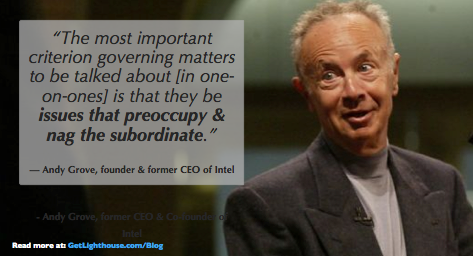Is your team ready for the challenges we’re facing post-covid? Are you prepared to lead them in a remote-first or hybrid-office world? What can you do to support your people’s wellbeing in the face of new challenges?
In 2020 and 2021, we dealt with some fundamental changes to the conditions we work in. Working from home has become (and probably will stay) the new standard for many. People are now more prone to burnout than ever before. They’re also much more likely to quit in search of more balance and stability.
Gallup has been keeping a close eye on workplace statistics and how they could impact you this year. They’ve also shared data-backed examples of possible solutions and the mechanisms behind them. In today’s post, we give you the insights they (and other companies) have gathered to help you handle the challenges of 2022 more effectively.

4 Workplace Issues Gallup Anticipates in 2022 and How You Can Deal with Them
In this week’s post, we’re covering 4 essential topics managers like you need to keep in mind based on today’s workplace and world conditions:
- How to find the cure for and avoid being a statistic of ‘The Great Resignation’
- Why more engagement doesn’t equal more wellbeing for remote workers - and how to fix that
- Why a 4 day work week doesn’t help, and what to do instead
- How to lead effectively when you have fewer days in your office with your team
Let’s dive deeper into the data, so you’re prepared for everything a leader in 2022 is facing.
‘The Great Resignation’ and What’s Causing It
In the second half of 2021, Gallup reported that almost half of U.S. employees were actively job searching. This phenomenon was dubbed “The Great Resignation”.
One of the biggest reasons for people quitting their jobs was feeling overwhelmed by work.
In Q4 of last year, ComPsych, found that “57 percent of employers think burnout is still affecting turnover and retention at their company“. Without a clear way to separate free time and work while working from home, people are sinking deeper into helplessness and deciding to change things. It doesn’t help when there’s so much uncertainty and stress happening for many outside of work, too.
Another huge problem behind people leaving in waves is employee disengagement. If your team members are engaged, it’ll take more than a 20% pay raise for them to quit. If, on the other hand, you don’t focus on motivating them, they’ll be ready to leave for often the same compensation as you’re giving them.
When people are overwhelmed with work and have no one to talk to about it, it’s only a matter of time until they decide they’ve had enough.
Now, we know from previous research by Gallup that the biggest cause of variance in employee engagement is managers. So even though “The Great Resignation” is real, you have much more control today over retaining your team than you may think.

1 on 1s are still the best way to address low engagement and burnout
One of the best ways to uncover issues with burnout and low engagement is to talk to your team on a regular basis about these topics. Your 1:1s are the perfect opportunity to do that.
Simply by having these meetings consistently, you’ll be able to keep your finger on the pulse when it comes to your team’s happiness. And if there’s an issue to fix, you’ll be able to do it before it snowballs and it becomes too late.
Unsurprisingly, one of the biggest predictors of high retention rates is how often you have quality 1:1s with your team. As reported in Harvard Business Review, “people who get twice the number of one-on-ones with their manager relative to their peers are 67% less likely to be disengaged."
Consistent 1:1s allow you to find out how people are doing week in and week out. They are the perfect source of information for uncovering if a person is experiencing or getting close to burnout. They can also tell you if someone is feeling disengaged or dealing with other issues that might cause them to leave.

What you ask in your 1 on 1s is as important as having them
Having consistent 1:1s is great, but it just scratches the surface of what you need to do as a manager.
To understand if a person is dealing with burnout or feeling less engaged, you need to be proactive about asking them.
You need to bring the right questions to the meeting to get them to open up to you and share how they feel. You can ask them things like:
- Do you feel like you’ve been working too much recently? What can we do to change that?
- Are you happy working here?
- What part of your job do you wish you didn't have to do?
- What worries you? What's on your mind?
- What would make you leave this job for another?
- What motivates you to do well in your role? What do you find frustrating about it?
- How is your work routine lately? What could be improved?
- How is your current work setup for you? What would you like to change or add to it?
- Do you feel well connected to our team and company today? Why or why not?
By asking these questions, you’ll be able to find out if people are struggling with burnout and low engagement. You’ll also understand the reasons why they’re having issues and help solve them.
In case you need some other resources on how to use 1:1s and prevent turnover in waves, we recommend checking out these links:
- Check in on their remote work setup and comfort with these 3 keys to transitioning to remote work effectively
- Need to tune up your 1 on 1s in general? Check out: The Ultimate One on One Meetings Template (+ Free Checklist)
- Worried about turnover on your team? Learn the 5 Reasons for High Employee Turnover (+ 5 Ways to Fix It)

Remote workers are more engaged - but feel like their wellbeing is neglected
Have you ever heard of the Wellbeing-Engagement Paradox? In most cases, the more engaged your team member is, the happier and more balanced they’ll feel. But one of the most notable findings of the pandemic was that remote workers show both high levels of stress and engagement.
Of course, the ongoing health crisis is not the only reason that has contributed to this. Recent economic and political instability have also added to our daily stress levels and made unplugging more difficult.
Unfortunately, as you can see from the image above, Gallup’s research from 2022 shows employees believe the company they work for care a lot less about their wellbeing than mid-pandemic. In fact, only 24% of employees feel their company is doing enough to support them, compared to 49% in 2020. This plummet is the lowest the score has been in nearly a decade!
Now more than ever, remote workers need help dealing with multiple sources of stress in their lives. Especially since it’s more difficult to separate free time and work, they need concrete ways to decompress and unwind. Here’s what you can do to help them work on their wellbeing.

Help your team deal with stress and avoid burnout
There are plenty of things you can do to help people avoid burnout and find more balance in their lives. The most obvious one is to ensure they're taking breaks regularly.
While working from home, it’s easy to work non-stop to an unhealthy degree. The lack of separation from the work day to personal time can cause the lines to blur and simply keep working.
To remedy this, teach them to block off time on their calendar so they don't spend entire days working. Encourage them to work on both the physical and mental aspects of their health. This includes activities such as:
- Exercising or taking walks
- Talking to their friends
- Mindfulness exercises, or meditation
Even mini-breaks can help break spells of stress and help them deal with burnout more easily.

Help them regain control of their lives with small wins and more autonomy
Constant distractions, a lack of structure, and monotony can lead to people feeling helpless while working from home.
That’s why you need to make sure everyone on your team has ways to get small wins and contribute to positive changes every day.
If you're working on projects that are turning into a nightmare or dragging on and on, think about milestones you can celebrate along the way.
If they feel like they’re losing control, help them by giving them the freedom to choose some things about their work. Let them do things such as:
- Decide what tools they use to complete their work.
- Choose their work schedule as long as they get their work done.
- Choose how and when they give you updates (e.g. don’t overwhelm them with unnecessary daily stand-ups) as long as it keeps you well informed.
By teaching your team to decompress, and giving them some control back in their lives, you can help them avoid burnout for the long term.
If you want more detailed recommendations on how to help your people unplug, check out the following links:
- How to Help Your Team Avoid Employee Burnout during COVID
- 8 Ways to Reduce Stress in the Workplace Today
- How to Improve Mindfulness at Work

A 4-day work week improves wellbeing, but hurts engagement
One of the biggest issues brought on by the COVID-19 crisis is people feeling overworked. To address that, some companies have been experimenting with a 4-day work week. The aim was to give people more flexibility and time for themselves.
However, things haven’t worked out as well as everyone had hoped for.
Surprisingly, Gallup's data shows that the percentage of people who are actively disengaged is higher among those who work fewer days (17% compared to 12% in 5-day work weeks). This means employees who already feel a disconnect from their organizations are likely to feel even less interested in their work.
Gallup’s definition of actively disengaged employees are people who "are either watching the clock, or actively working against their employer.”
Implementing a 4-day work week will certainly reduce your team’s workload and make them feel less overwhelmed. Compared to those who work 5 days, people who work just 4 are 6% more likely to feel good about their work-life balance. But if the price of that is sowing the seed of disengagement on your team, then it’s just not worth it.
As we mentioned earlier, lower engagement increases the danger of people leaving your company. Even though the intentions behind a 4-day work week are good, it will likely do the opposite of what you were looking to achieve. And even worse, that’s likely at the expense of how much you can get done as a team.
That's why Gallup's Chief Scientist suggests taking a different approach:
"Focusing on improving the quality of the work experience, companies could have nearly triple the positive influence on employees' lives compared with shortening their workweek.”
With that in mind, here's a few approaches you can take to help your team that work better than removing one day from your work week.

Try these 3 things instead of reducing the number of workdays
There is so much more you can offer your team instead of a day off every week. With the following strategies, you’ll be able to win their loyalty and help them improve their wellbeing without sacrificing productivity.
Start by coaching them
Coaching is an essential skill for every great manager. To be an effective manager, you need to master getting the most out of the people you lead. According to Gartner, employees who report to good coaches are up to 40% more focused.
Coaching allows you to uncover what each individual on your team needs and support their wellbeing and progress. By doing that, it eliminates the need for a 4-day workweek, and one of the top reasons people take new jobs:

And when you’re coaching in today’s environment, you’ll find there are many opportunities to specifically help them with those challenges; you can coach people on how to better manage their time, give them advice on how to deal with stress, or share with them tips for working remotely.
Give them flexibility instead of days off
A key aspect of keeping your team members engaged is trusting them to do work how they see fit, and avoiding micromanaging them.
As research by psychologists Emily Kleszewski and Kathleen Otto has shown, micromanaging is one of the leading causes of burnout.
As Kleszewski explains:
“Good team climate is important for mental wellbeing at work. Micromanagers are perfectionists and often demand too much from their teams, creating a toxic atmosphere. People would rather work with the person with realistic expectations for themselves, and also for the team.”
Give your people some control in their lives by providing some flexibility in their work day. When you do, they are much less likely to feel overwhelmed and become actively disengaged, as you’ll be trusting their judgment on when and how they can work best. .
As former Yahoo! CEO Marissa Mayer puts it:
"I tell people: Find your rhythm. Your rhythm is what matters to you so much that when you miss it you're resentful of your work.”
Helping people find their rhythm is better than overworking them or changing their habits with a 4-day work week. Let them organize their own time and they’ll thank you for it and be more productive.
Make growth a regular talking point
Career growth & development is the top perk employees are looking for in their job. It’s something research and surveys have confirmed over and over again but often gets overlooked by managers.
According to psychology professor Frederick Herzberg:
“For most individuals, the greatest satisfaction and the strongest motivation are derived from achievement, responsibility, growth, advancement, work itself, and earned recognition.”
Taking on new challenges and charting out a clear long term path is an extremely strong motivator. Take advantage of that by asking your team members these questions and checking in on their career development every 4-5 one on ones with them:
- What are your long-term goals? Have you thought about them?
- What skills would you like to develop right now?
- What additional training or education would you like?
- Are there any roles in the company you'd like to learn more about?
- Is there anything I can do to help you improve in x, y, z?
- Is there anything blocking your progress?
Talking about growth allows you to bring up and influence something that truly matters to them. It’s the perfect way to prevent people from drifting away from your company.
For more ideas on how to help your team by driving their growth, check out the following links:
- Try asking these Questions for talking about career development in your 1 on 1s
- What Managers Need to Do to Help their Teams Reach their Goals
- Learn How to provide employee development when you can't promote your team

Expect a 37% decrease of in-office days
In December 2021, Gallup published data that confirmed around 60 million people will have the option of working from home even after things return to ‘normal’ Post-COVID.
For those people, they are anticipating a 37% reduction of in-person days worked per week in 2022. That is a huge change, and one organizations have to start preparing for now.
Unfortunately, leading partially remote organizations can get tricky. Your remote team members often feel a disconnect between them and their in-office colleagues. This can happen due to:
- Information inequality: it’s easier to stay in the loop by overhearing conversation in the office.
- Feelings of isolation: working face to face with others can be energizing for many in a way faces on a screen does not provide.
- Being in a different time zone: If you work different hours that can cause remote workers to miss some key discussions, or be unavailable when an impromptu meeting occurs.
- Getting passed over for promotions: Many companies will tend to promote employees who are “more visible” which means being in the office provides an advantage for those wanting to advance quickly.
Overcoming these challenges is not easy. It’s only natural for many of the above issues to occur, which is why they’re so common.
To combat them, you have to proactively work on them. Here are several ways to do that when leading hybrid teams.

Mastering leading hybrid teams and making everyone feel included
To avoid your team members feeling disconnected from the rest of your team, you can work on building the following habits:
- If you hear something they should know, loop them in immediately, or write down a quick note and share it with them later.
- Use your one on ones to fill them in on the things they haven't heard and encourage them to ask questions.
- Adopt inclusive habits by having video calls with everyone that needs to be a part of a discussion whenever possible, including both in-office and remote team members.
While this may take getting used to and feel a bit awkward in the beginning, doing it is well worth it. Unless you actively keep your remote team members in the loop, they’ll start feeling like outsiders compared to the rest of the team.
Help them build bonds and connect, even at a distance
We know remote team members are often unable to build relationships with and feel connected with the rest of your team. To prevent that, work to create opportunities for everyone to socialize, no matter where they're located.
Here are some activities you can try to help everyone on your team build rapport with each other:
- Open your meetings with bonding/ice-breaker questions
- Play pub-style team trivia together
- Try remote-friendly games (Among Us, Codenames, etc)
- Have employees take turns giving tours of their hometowns via Facetime
- Have a virtual pizza party with Pizzatime.xyz
Building rapport is particularly challenging when some people on your team are in one office and others on another continent. Use these activities to overcome that and create frequent opportunities for people to get to know each other.
Develop asynchronous communication to avoid Zoom fatigue and time zone crunches
Remote team members will sometimes be thousands of miles (and a few time zones) away. That’s why embracing asynchronous communication across your team is an absolute must if you want to keep them happy and productive.
The easy thing to do as we all started working remotely was to have another Zoom call or meeting for every little thing. Yet we also all quickly realized that was exhausting, and inefficient; there’s no time to get real work done if all you do is talk on Zoom all day, and it can be brutal to coordinate across schedules.
Instead, asynchronous communication can help key information to spread across your team, and give everyone a chance to reflect and give input without having to be live on the same call.
Doist founder Amir Salihefendić has several great tips for becoming better asynchronous communicators, including:
- Promote writing and communication as core skills to master. Recognize it, reward it, and set a strong example of it yourself.
- Teach people how to spend time productively while waiting for an answer, so everything doesn’t have to be an interrupt-driven emergency.
- Use tools that promote deep work and async communication to make this adoption easier (e.g., Github pull requests, Basecamp for project management, Google docs for notes, key discussions, and information dissemination, etc).
- Give people time to consider something and set reasonable deadlines on when you expect an answer (i.e.- 48 hours to comment and add questions instead of everyone meets at X time tomorrow.)
If you need more help setting up more intentional processes to support remote team members and get better at asynchronous communications, check out these posts:
- Your Guide to Synchronous vs. Asynchronous Communication
- 13 Challenges You didn't Plan for When You Started Hiring Remote Employees (and what to do about them)
- Remote Management: 41 Questions to Ask Your Hybrid Team
Conclusion
Even when COVID-19 goes away, some of the huge changes it caused in our lives will stay. As a manager, it’s up to you to help your team avoid burnout, overcome feelings of isolation, and improve engagement in 2022.
To do that, use the tips we’ve described today:
- Be sure you’re having regular 1:1s and specifically talk about challenges and solutions to burnout, stress, and isolation with them.
- Encourage them to take time to unwind, separate work and their free time, and take care of their mental health.
- Coach them to improve their work and productivity, while showing them a path to career growth and advancement at your company.
- Hold more inclusive team building activities and teach people asynchronous communication to help them build better relationships - even on hybrid teams.
By taking these approaches, you’ll be well ahead of the curve of most managers. You’ll give your team the environment they need to thrive, and help you avoid being another statistic in the Great Resignation.
Want help mastering all these approaches, and get more guidance like today at your fingertips while you meet with your team members?
Lighthouse is purpose-built to help you have amazing 1 on 1s, organize and make progress on your team’s career goals, and build accountability with your team on these important topics. We even have suggested questions for you to reference and use in your 1 on 1s to talk about their careers, support your remote workers, talk through a crisis, and much more.





